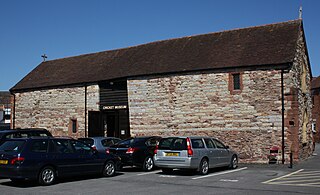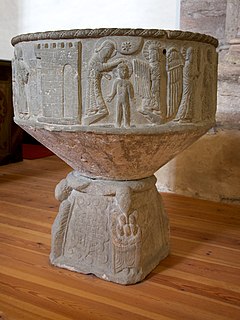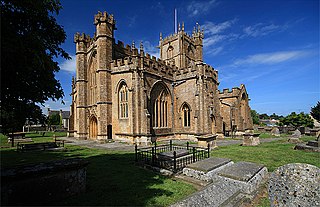
The Church of St Bartholomew in Crewkerne, Somerset, England dates from the 15th century and has been designated as a Grade I listed building.

The Church of St Michael in Shepton Beauchamp, Somerset, England is built of local hamstone, and has 13th-century origins, although it has been extensively changed since then, with major renovation in 1865 by George Edmund Street. It has been designated as a Grade I listed building.

The Church of St Bartholomew in Ubley, Somerset, England is a small medieval church originating from the 13th century with later additions. It has been designated as a Grade I listed building.

The Church of St Bartholomew in the parish of Yeovilton, Somerset, England, was built around 1300. It is a Grade II* listed building.

St Bridget's Church, Brean is the Church of England parish church of the village of Brean in Somerset, England.
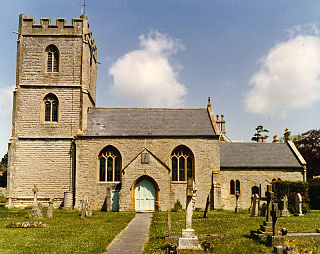
The Anglican Church of St Mary in Cossington within the English county of Somerset was built in the 13th century. It is a Grade II* listed building.

The Anglican Church of St Michael and All Angels at Rowberrow within the English county of Somerset dates from the 14th century, but parts were rebuilt in 1865. It is a Grade II* listed building.

The Anglican Church of St Michael and All Angels in Bawdrip, Somerset, England was built in the late 13th or early 14th century. It is a Grade II* listed building.

The Church of St John the Baptist is a Church of England parish church in Ashbrittle, Somerset. It was built in the 15th century, and is a Grade II* listed building.

The Anglican Church of St Leonard in Otterford, Somerset, England was built in the 14th century. It is a Grade II* listed building.

The Anglican Church of St Mary in Stoke St Mary, Somerset, England was built in the 13th century. It is a Grade II* listed building.

The Anglican Church of St Peter and St Paul at Runnington in Langford Budville, Somerset, England was built in the 15th century. It is a Grade II* listed building.

The Church of the Holy Cross in Hillfarrance, Oake, Somerset, England was built in the 14th century. It is a Grade II* listed building.
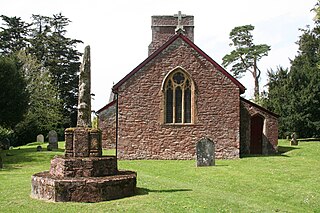
The Church of St John the Baptist in Heathfield, Somerset, England was built in the 13th century, from which the tower remains. It is a Grade II listed building. The churchyard cross may also be from the 13th century.
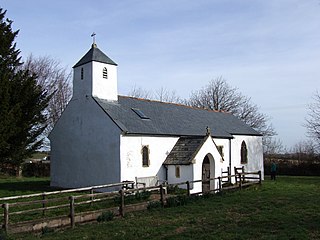
The Anglican Church of St Bartholomew in Rodhuish, Somerset, England was built in the 15th century. It is a Grade II* listed building.

The Church of St Lawrence in Westbury-sub-Mendip, Somerset, England was built in the 12th century. It is a Grade II* listed building.
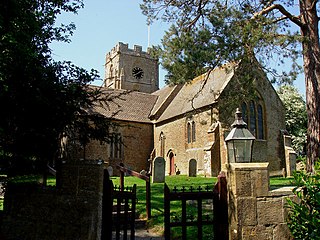
The Anglican Church of St Andrew in Puckington, Somerset, England was built in the 13th century. It is a Grade II* listed building.

The Anglican Church of St Michael in Cudworth, Somerset, England was built in the 12th century. It is a Grade II* listed building.

The Anglican Church of St Michael in Wayford, Somerset, England was built in the 13th century. It is a Grade II* listed building.






